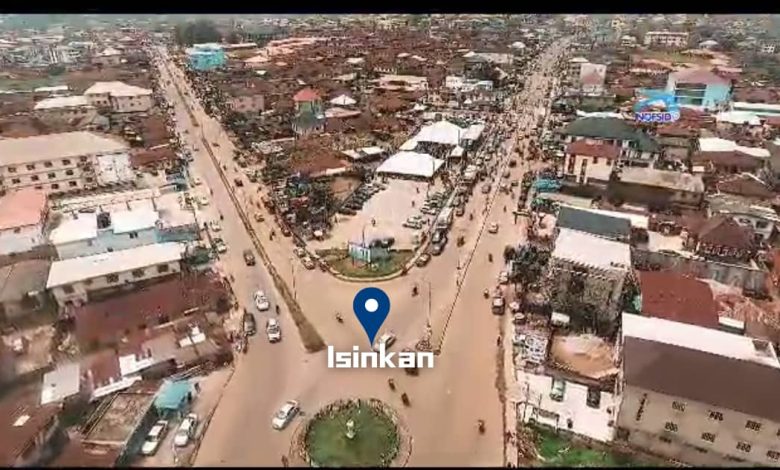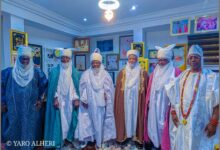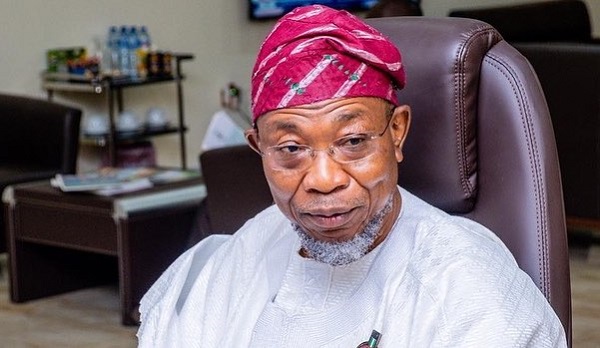Edo war of 1818 – Isinkan Akure, and the last stand at Aledimoponyin

By DAVID ADEGBOYEGUN
Benin forces under Oba Erediauwa Osemwende sacked Akure in 1818 and Oba Alademomi Arakale, the 29th Deji of Akure, was assassinated that night in his palace by the Binis. The story of his running around to Ado Ekiti, Uju, and the Arinjale by J. U. Egharevba is a fabrication to cover for the crime of an unprovoked attack on Akure and to legitimize the criminal raid as a worthy conquest. Egharevba, had in his work sought to indict Arakale for the death of Osague and pointedly claimed the former seized all the Osague’s chiefly coral beads adornment upon his death. The imperial conquest painted by Egharevba is not strange. It follows a familiar pattern of many Bini historians who took extraordinary measures to disguise clear accounts of the defeat of the Bini Kingdom in battle. Chief Jacob Uwadiae Egharevba MBE was a Bini historian and traditional chief whose writings specialized in the history of Benin Kingdom and whose solidarity and loyalty were entirely to Benin.

This essay makes generous use of the annual victory dance and performance at Udiroko festival in honour of the Oroko (Oluroko) deity in Isinkan over the defeat of Osemwende forces. The essay also generously used direct accounts of the war as told to generations of Isinkans from that faithful night in 1818 that witnessed the massacre of Isinkan women and children at Ulafon by Edo forces. Of all victorious historical military engagements involving the elite Osugbo (Esho ule Isinkan) in Isinkan, few are as popular as the battle of Ulafon, the battle of Ofosu, the final decisive vanquishing of Okpele Erabor the Ezomo, the Commander of the Bini campaign, by the Eshos at Aledimoponyin, and the battle to liberate Okelisa in Akure, all parts of the 1818 war against the Bini kingdom.
Prior to 1818, Oba Arakale of Akure had earlier been warned by Oba Ifagbade ‘Okemoja’ Ifatiri (Onaowuro I) of Isinkan and the reigning Ogbe of Oda to prepare his forces but he did not. Arakale, the then Deji of Akure, had told his neighbours that he was related to the Binis by blood and held the view that he was immune to their attack. That night in 1818, Oba Arakale was overrun by the forces of Benin dominated by the Ishan/Esan alliance, and a number of his family members were killed whilst many were taken captive to Bini on foot. In retrospect, the Bini’s attack against Akure and its surrounding towns in 1818 had only one objective – dominance.
The adjoining communities around Akure who traditionally stayed away from Benin-Akure conflicts were forced to join the war due to provocation and the threat it represented to their survival. History was repeating itself as nearly a hundred years earlier, Oba Orudu, the then Deji of Akure had made overtures to Oba Adegboyegun (Okingoroye), the Iralepo of Isinkan for assistance pleading that Akure, Isinkan and Isolo towns should band together to forge a common resistance similar to what Oba Arulewola (Arulewolasi I) of Isinkan and Oba Gbogi of Akure achieved between 1675 and 1714. In 1818 however, Arakale was taken by surprise and he could not call for help. His palace was destroyed by a cannon shot. He was captured and summarily executed.
Based on Isinkan’s oral history, there was supposed to be a pact from langsyne between the Ogisos, earlier founders of Bini, and Oroko, the progenitor of the Oluroko line in Isinkan. Oroko in Isinkan mythology was the last of the Obara sky gods and the first in the Oroko or Oluroko dynasty – just as Ora, the father of modern Isinkan, was the last king in the Oroko dynasty and the first in the Oralopo (Iralepo) dynasty.
So, in deference to this famed pact between the Ogiso and the Orokos, in all the previous raids by the Binis, they stopped at Ofosu. They spared a growing community then known as Ulafon, founded by a relative of an Iralepo of Isinkan during the reign of the female Iralepo, Queen Arabi Omekunlaaye, and which was expanded and given a formal leadership structure by Aseso when he became the Iralepo. Queen Arabi was believed to wield the power of Yeye. Yeye Osorun or the Goddes Osorun is the highly venerated female primordial Deity of the Isinkans. The Oroko farm deity (Oluroko Oko) was then kept at Ulafon at that time whilst the Oroko communal deity (Oluroko Ule) was kept at Udiroko near Ita-Owa in Isinkan. The Binis however violated this in 1818 by sacking Ulafon.
It was a massacre at Ulafon. The Binis murdered children and women. The resistance mounted by the mainly farming community collapsed in minutes under the superior firepower of the invaders with their farm produce plundered. Only a few able-bodied men managed to escape. The Binis plundered the land and planted their war camp. Ancient Ulafon was located beside the area known today as Adofure. The Binis sacked the community with the objective of marching through Oke-aro and through Odi-Olowo in Isinkan to join their advanced line that had entered and sacked Akure through Okelisa and thereafter marched via Ikere upon Ado Ekiti where another monarch that claimed Benin ancestry just like Oba Arakale, was king – and ultimately set sight upon Inamu.
In Isinkan’s tradition, Okuntirin, the Baale (Olu) of Ulafon was considered the son of Oba Iralepo due to the ancestral tie of Iralepo to the land. The report of the sack of Ulafon, the custodial abode of Isinkan’s deity, the Oluroko oko, and the wanton killing of women and defenseless children as well as the capture of Baale Okuntirin saddened and angered the reigning Iralepo and the Isinkans and they had to enter the war by default. Indeed, the sack of Ulafon was what prompted the Iralepo to order that the Oluroko oko be moved to Ujaro (Ijaro) where it still is today, unknown to many.
Iralepo summoned the dreaded Oshos of Isinkan from the forest of Isharun and ordered the liberation of Okuntirin and all those held captive as well as a siege on the elaborate camp of the invaders at Ulafon. The Oshos or Eshos was a feared quick-footed youth fighting force made up of toughened young men that just emerged from the Osugbo ritual in Isharun forest. In the distant past, the Osugbo experience and its ritual were mandatory for every male child in Isinkan upon attaining the age of 14. Those who excelled the most could join the Esho group of fighters. They were thus considered the elite Osugbo because not all Osugbo Usi entered the Esho service. This elite fighting force was the first to use the muzzle-loading flintlock rifle in the hinterland outside the Lagos colony in the 1800s. They were supposed to be military-grade weapons. The articles were procured through Ondo traders who regularly visited Lagos.
Two of the major Edo Generals who led that assault were named Edogun and Esigie. These two had Okutinrin of Ulafon and several Ulafon and Akure captives in their custody. They were chased to the forests of Ofosu by the Esho Ule Isikan and killed in battle under the command of Yagbo Agbada the Ajana Igan. The captives were all recovered except some children of Arakale who could not be located.
The decisive battle was however fought at Ulafon. Ogundana Adanri (Ekun Woriiri) who led a unit of the Eshos on his 21st birthday, against his Commander’s instruction as the latter had mounted a frontal attack on the Bini’s position at Ulafon, executed a turning movement by pivoting away from battle-front, cross the river and launched a flant attack against the Bini camp. Ogundana’s courageous maneuver, though impetuous, led to the routing of a large protective force mounted around Okpele Erebor, the Ezomo of Bini. By cycling Ulafon with repeated volleys from their flintstock rifles and daring raids into the heart of the settlement, the 21-year-old eventually had the general captured alive even whilst he himself was completely oblivious to the fact that his unit was fighting the most formidable Edo force for the assumption was that the leader of the Bini Campaign was in Ofosu. Thus, so it was that ‘Oloriogun Ado’ as described in Isinkan account, i.e., the principal Bini General, Okpele Erebor, the Ezomo, who was considered the overall commander of the assault and to whom another Edo man served as a flautist (afunpe) was captured by 21-year-old Ogundana Adanri, the son of Sao Agbaakin and future father of the famous Sao Adanri of Isinkan at a burnt-out camp at Ulafon after a six-hour counter-seige. The Ezomo’s lieutenants and personal guards were all killed in battle except the flutist and some of his elite guards who retreated into the surrounding bushes due to the surprising raid. Erebor was led by his captors through Okearo, Ajebamidele, and Odiolowo to the palace of Iralepo at Ita-Owa in Isinkan.
When brought before the Isinkan king, Okpele Erebor was interrogated on the murder of children and women at Ulafon and Oba Iralepo in Council ruled that he be executed at Udiroko for the killings.
Unknown to his captors, the Ezomo had a shotgun (a pistol-type weapon) hidden under his dress. He was however bewildered and in shock from the quick twist in his fate, for a day earlier he was at the command of a fierce force of thousands of fighters. His flutist, however, kept passing a secret message to him with his flute to alert him that he still had a weapon on him. At that time, the Isinkans were familiar with and had rifles that were supplied through Ondo town but perhaps they were not familiar with the shorter gun or they carelessly overlooked it in their euphoria. By the time the epiphany of the repeated messages of the flautist dawned on Okpele, he drew the short gun from under his war dress and fired wild into the midst of his captors killing a teenage boy who was carrying the barrel of gunpowder for Ogundana.
At that moment Erabor was said to have sighted about 20 of his elite guards who had regrouped with the goal of coming to his rescue and were approaching from the way to Ondo town. Thus, as he freed himself from the grip of his captors after firing the shot, the Ezomo immediately attempted an escape and ran towards Aledimoponyin, the aberrant palm tree of the Isinkan at a crossroad on the way to Ondo and into the waiting arms of his guards who fired at the Eshos.
Ogundana and his men in sheer rage, gave a chase despite the intensity of the volleys of shots. They took cover from the invaders’ fire behind a long stretch of bulwark, the remnant of composite mud bricks that once served as a perimeter fence. Isinkan fighters pinned Ezomo and his men against Aledimoponyin, the aberrant palm tree. The Esho Isinkan overpowered the Ezomo and his liberators and dispatched the guards in no time. They recaptured Erebor and dragged him back to Udiroko, to the spot known as Elegboroko, where he was executed.
The reigning Omoran, the diviner of Isinkan, was said to have consulted the oracle to affirm if the flutist of Erebor, had ever shed human blood. He came clean. The Omoran then advised he be spared. The Oroko god of Isinkan, the patron deity of Oluroko, forbids the shedding of the blood of certain professionals such as drummers, or other entertainers, even during wars as long as they have never been directly responsible for shedding human blood. Subsequently, Okpele Erebor’s head was handed over to his lieutenant, his flutist, for return to Benin.
The Isinkans, with the support of two powerful warriors from Ikere Ekiti, Aparimo and Alaleetan, who were the most popular war mercenaries around that time, then marched on Okelisa in Akure where the largest remnant of Benin forces had camped in their desire to take over as the Akure Oba’s family had been taken captive, his army decimated and Akures escaped into the forests.
A Benin commander, Ologbosere led the attack that decimated Oba Arakale’s army. Ologbosere was captured by Aparimo and taken to Oke-Eda where he was hanged. So it happened that truly the Benis invaded Yoruba peripheral towns in Akure and the adjoining communities in 1818 and murdered Arakale, the Oba of Akure. None of the Edo commanders however returned to Benin alive. The Binis have nevertheless conveniently disguised this total defeat by recasting the deaths of those Generals as natural or from ailments. While Egbarevba acknowledged the fact that not a single principal leader of the campaign returned to Benin alive, he too conveniently attributed their deaths to natural causes thereby denying an opposing army of its well-deserved accolades of victory.
The man Imaran whom some Isinkan elders claimed was the lieutenant to the Ezomo and only disguised as his flutist to escape death was at least agreed not to be the aggressor at Aledimopoyin. The ‘Oloriogun Ado’, the Ezomo, fired the shot that killed the boy that carried the gunpowder. The consensus in Isinkan has always been of two characters that were captured in battle and taken to Isinkan after the invaders’ main troop was vanquished at Ulafon – Oloriogun Ado and his afunpe – the overall General of the campaign, the Ezomo, and a lieutenant that used the flute. The Ezomo fired a shot after a judgment of death had been passed on him by the Iralepo in Council and ran towards a band of guards that approached Ita-Owa to save him. His liberators were killed. He was subsequently recaptured and beheaded. The second man held and used the flute. That was his role. Granted that he could be described as a lieutenant to Okpele Erebor, he played no aggressive role during the encounter. The Isinkan seer also cleared him. Moreover, Imaran, like Ezomo is more of a title than somebody’s birth name.
This decisive victory and its associated events have remained popular stories that are annually celebrated during festivals in Isinkan to this day. The cognomen of Iralepo, orisha l’ila s’Oba Ado jigbojigbo (the mighty deity that troubled the king of Edo), is believed to be a product of this encounter even though highly knowledgeable elders of Isinkan claimed the appellation was a product of a much earlier encounter several hundred years before 1818. Also, the popular saying in Isinkan, Ogun k’Akure. Ogun k’Ulafon. Ogun de bebere eti Usi, Isinkan li k’ogun (when war visited Akure, Akure was plundered. When war reached Ulafon, Ulafon was plundered. But when war reached Isinkan, it was Isinkan that plundered the enemies’ loot) is believed to have evolved from this encounter.
Ensuing from the execution of the Ezomo of Benin at Udiroko in Isinkan, there was a belief held by the locals for a long time that before his death, he placed a curse that male children in Isinkan shall not survive birth or grow past the first 3 years of life. This notion was made popular because shortly after the war, many male children in Isinkan died in infancy. Many were said to have died between childbirth and their first birthday. Whereas, female births or female children were not so affected.
Fear and panic thereafter drove pregnant women in Isinkan to Oda to deliver and raise male children. Oba Fajolagbe Atejioye Obe (Onaowuro II) whose father, Onaowuro I, was on the throne during the Bini war, was credited with lifting the curse several years later. Modern extensive understanding of global history has however proven that there was no such curse by the Ezomo that affected infant male children or any child whatsoever in Isinkan. Okpele Erebor, the Ezomo, himself was executed at Udiroko for the murder of children and defenseless women at Ulafon. In contemporary language, it would be said that he was a convict and an executed war criminal. He thus lacked the spiritual morality to place a curse on anyone. Moreover, the Isinkan tradition of Ẹbibϙ Ọsorun is premised upon a spiritual shield by Yeye, the Isinkan primordial female Goddess that makes Isinkan land and any bonafide child of Isinkan beyond any form of enchantment, affliction, sorcery, or curse. It would be a convoluted contradiction that a quasi-war-thug placed a curse against those blessed by a Goddess to be above curses.
From history, however, we now know that the first cholera pandemic that broke out circa 1818 was the cause of children’s deaths in Isikan. The disease affected every continent on earth. The cholera pandemic originated near the city of Calcutta in Asia and spread to all parts of the world, including Africa. It is not unlikely that Portuguese travelers could have brought it to the coast of Lagos from where it could have been transmitted to Isinkan via Ondo by traders and weapon sellers at the time or by some of the invaders, like Erabor himself, who was killed. The invaders who were slain in the waters of Elegbudu, Ofosu, Elegbin, and Yeye probably contaminated the water, and the disease spread.
Cholera is an acute diarrhoeal infection caused by ingestion of food or water contaminated with the cholera bacteria. Regarding the higher prevalence of child deaths in Isinkan in 1818, modern scientific studies have suggested that “children with cholera were more commonly retinol deficient, while zinc deficiency was equally prevalent in both groups. Children developed higher vibriocidal and serum immune responses to the B subunit of cholera toxin (CTB). In contrast, older patients mounted higher immune responses to 2 other key V. cholerae antigens, the lipopolysaccharide (LPS) and toxin coregulated pilus antigens (TcpA)” . Furthermore, the predominant male-children deaths compared to female children have a scientific basis as it has equally been established that female children in certain circumstances could have higher immunity or indicate stronger resistance to diseases than male children. This likely accounted for the greater deaths of male children in Isinkan after the war of 1818. For instance, Ciaranbino et al (2021) stated that “Females have increased resistance to viral, bacterial, fungal, and parasitic organisms than males. Females are less susceptible to microbial infections. Females have a higher innate immune response than males” (Ciarambino , Para , & Giordano , 2021).
The account of the defeat of the forces of Erediauwa, Oba Osemwende of Benin, by the Isikans through force of arms was what emboldened Oba Odundun of Akure to refuse a claim of superiority from Oba Adolo of Benin in 1882 and later Oba Ovonramwen Nogbaisi of Benin. It was also why the latter was plotting a revenge attack on Akure and other peripheral Yoruba towns circa 1890 before the British vanquished him. It was also why Oba Odundun of Akure decided to raise and arm his forces and why he bought a lot of rifles circa 1888 through the Ojumu (Ologorun) of Isikan and Ogunkinle of Ondo when Ovonranmwen first issued his threat in anticipation of the possibility of an attack as he was not prepared to relax as his forbear, Arakale, had done.









